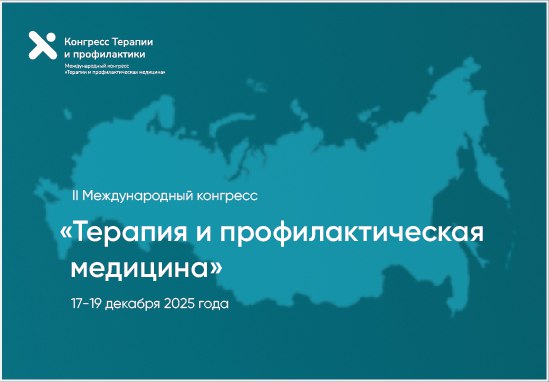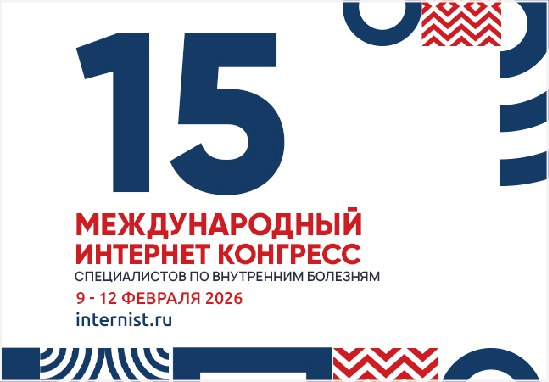Особенности прогнозирования при остром коронарном синдроме у мужчин и женщин
Аннотация
Цель. Изучить возможности прогнозирования госпитальных исходов при остром коронарном синдроме (ОКС) с учетом пола больных. Материал и методы. В сплошное исследование включены больные с признаками острой ишемии миокарда (n=1035). Роль клинических и лабораторных показателей в прогнозе ОКС оценивалась методом бинарной логистической регрессии. Результаты. В возрасте < 65 лет развитие ОКС у мужчин чаще завершалось развитием Q-образующего инфаркта миокарда – 23,4% и 9,7% у женщин (p<0,001), тогда как в пожилом возрасте > 65 лет структура ОКС у мужчин и женщин практически не различалась. Женщин чаще госпитализировали с отягощенным кардиоваскулярным анамнезом, случаями диабета, они в возрасте < 65 лет более активно использовали антиишемические препараты в регулярной терапии артериальной гипертонии и ишемической болезни сердца. Однофакторный анализ переменных, зарегистрированных при поступлении, показал, что предикторы летального исхода ОКС можно объединить в 3 группы: факторы риска (ФР) с независимым от пола влиянием на прогноз заболевания; ФР с различной степенью влияния; ФР с изолированным, в пределах пола, эффектом. Оценка вероятности летального события в многофакторной модели была более эффективной у мужчин, чем у женщин – объясненная дисперсия 72,4% и 48,5%, площадь под кривой 0,99 и 0,93 соответственно. Заключение. Раздельное, с учетом пола больных, изучение ФР и их предиктивной способности является оптимальным при решении задач прогнозирования госпитальных исходов ОКС.
Об авторах
Р. Т. СайгитовРоссия
М. Г. Глезер
Россия
Д. П. Семенцов
Россия
Н. А. Малыгина
Россия
Список литературы
1. Глезер М.Г., Сайгитов Р.Т., Семенцов Д.П. и др. Острый коронарный синдром у пожилых: прогноз госпитальной смертности. Клин геронт 2005; 11(1): 13-20.
2. Boersma E, Pieper KS, Steyerberg EW, et al. Predictors of outcome in patients with acute coronary syndromes without persistent ST-segment elevation: results from an international trial of 9461 patients. Circulation 2000; 101: 2557-67.
3. Brunner EJ, Marmot MG, White IR, et al. Gender and employment grade differences in blood cholesterol, apolipoproteins and haemostatic factors in the Whitehall II study. Atherosclerosis 1993; 102(2): 195-207.
4. Fiebach NH, Viscoli CM, Horwitz R.I. Differences between women and men in survival after myocardial infarction. Biology or methodology? JAMA 1990; 263(8): 1092-6.
5. Granger CB, Goldberg RJ, Dabbous OM, et al. Predictors of hospital mortality in the Global Registry of Acute Coronary Events. Arch Int Med 2003; 163: 2345-53.
6. Guralnik JM, Eisenstaedt RS, Ferrucci L, et al. Prevalence of anemia in persons 65 years and older in the United States: evidence for a high rate of unexplained anemia. Blood 2004; 104(8): 2263- 8.
7. Hargrove GM, Junco A, Wong NC. Hormonal regulation of apolipoprotein AI J Mol Endocrinol 1999; 22(2): 103-11.
8. Hasdai D, Behar S, Wallentin L, et al. A prospective survey of the characteristics, treatments and outcomes of patients with acute coronary syndromes in Europe and the Mediterranean basin; the Euro Heart Survey of Acute Coronary Syndromes. Eur Heart J 2002; 23(15): 1190-201.
9. Haverkate F, Thompson SG, Duckert F. Haemostasis factors in angina pectoris; relation to gender, age and acute-phase reaction. Results of the ECAT Angina Pectoris Study Group. Thromb Haemost 1995; 73(4): 561-7.
10. Hochman JS, McCabe CH, Stone PH, et al. Outcome and profile of women and men presenting with acute coronary syndromes: a report from TIMI IIIB. JACC 1997; 30: 141-8.
11. Johansson S, Bergstrand R, Schlossman D, et al. Sex differences in cardioangiographic findings after myocardial infarction. Eur Heart J 1984; 5: 374-81.
12. Marchioli R, Avanzini F, Barzi F, et al. Assessment of absolute risk of death after myocardial infarction by use of multiple-risk-factor assessment equations. GISSI-Prevention mortality risk chart. Eur Heart J 2001; 22: 2085-103.
13. Newby LK, Bhapkar MV, White HD, et al. Predictors of 90-day outcome in patients stabilized after acute coronary syndromes. Eur Heart J 2003; 24: 172-81.
14. Pocock S, McCormack V, Gueyffier F, et al. A score for predicting risk of death from cardiovascular disease in adults with raised blood pressure, based on individual patient data from randomized controlled trial. BMJ 2001; 323: 75-81.
15. Rosengren A, Wallentin L, Gitt A, et al. Sex, age, and clinical presentation of acute coronary syndromes. Eur Heart J 2004; 25(8): 663-70.
16. Stegnar M, Pentek M. Fibrinolytic response to venous occlusion in healthy subjects: relationship to age, gender, body weight, blood lipids and insulin. Thromb Res 1993; 69: 81-92.
17. Zindrou D, Taylor KM, Bagger JP. Admission plasma glucose: an independent risk factor in nondiabetic women after coronary artery bypass grafting. Diabetes Care 2001; 24(9): 1634-9.
Рецензия
Для цитирования:
Сайгитов Р.Т., Глезер М.Г., Семенцов Д.П., Малыгина Н.А. Особенности прогнозирования при остром коронарном синдроме у мужчин и женщин. Кардиоваскулярная терапия и профилактика. 2006;5(1):63-70.
For citation:
Saygitov R.T., Glezer M.G., Sementsov D.P., Malygina N.A. Gender-specific prognosis in acute coronary syndrome. Cardiovascular Therapy and Prevention. 2006;5(1):63-70. (In Russ.)
























































